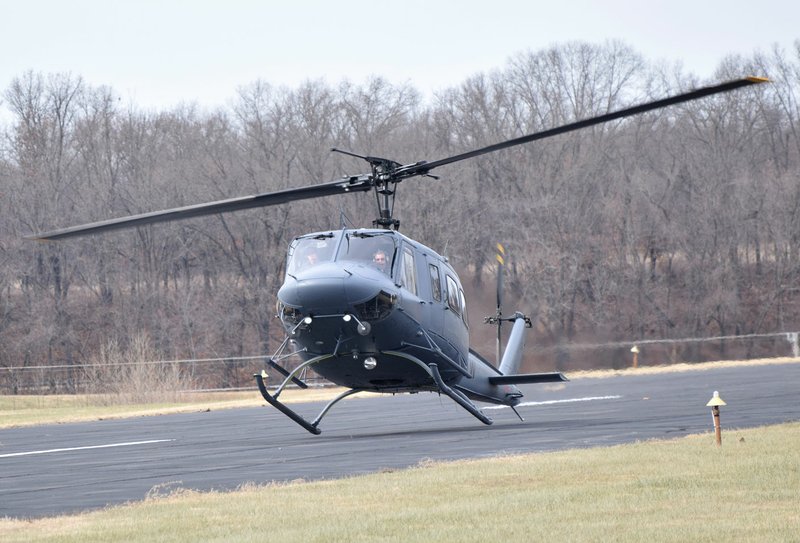DECATUR — It was a normal Tuesday afternoon in Decatur Dec. 20. The sounds of rush-hour vehicle traffic filled the air. A Kansas City Southern switch engine was transferring several grain cars from the mainline to the siding near the Decatur Depot. All was as it should be, but suddenly the sounds of bop-bop-bop-bop-bop-bop disrupted the evening's routine.
From the northern end of Decatur a helicopter appeared, hovering tree-top level near Crystal Lake. Then suddenly it disappeared from the sky. Ten minutes later it reappeared, hovering over the same location. This made many Decatur residents scratch their heads and wonder what was going on.
The explanation was quite simple, that helicopter was using Crystal Lake Airport as a temporary pilot training base.
The Bell 205, origin unknown, was using the 3,900 foot Runway 13 for a two-day pilot training program in emergency procedure and a refresher course in flight characteristics for this particular type of aircraft.
The objective was to train the student, probably a licensed helicopter pilot, to handle any kind of emergency situation from loss of power to a simulated on-board fire. These types of emergency situations put the crew and aircraft in mortal danger.
One of the biggest misconceptions about helicopters involves a catastrophic engine failure in mid-flight causing it to drop like a rock. This in part is true, but a skilled pilot using his available resources can put the helicopter down in one piece. In flight terms, this is called autorotation.
The main rotor blades are shaped like the airfoils of a fixed-wing aircraft. In normal flight, the rotors push air downward, providing lift and thrust. In a loss of power situation, the blades, which automatically disengage from the engine and allow the rotor to freewheel (still rotate), allow the air to move upward and the helicopter to descend. The freewheeling blades provide just enough rotation to allow the pilot to safely land his crippled aircraft.
The helicopter this instructor used for his training course was one that was built to take all kinds of abuse from hard landings to shot out tail rotors. The Bell 205 is the civilian version of one of the most popular helicopters of the 20th century, the Bell UH-1H Iroquois, affectionately known as the "Huey." The Huey first saw service during the Vietnam War and was the work horse for the United States Army for well over 30 years until it was replaced by the Sikorsky UH-60 "Blackhawk" in the 1990s.
The UH-1 first flew in 1956, going into production in 1958 and entering service with the United States Army in 1962 during the Vietnam War. The Huey, which received its name from the pilots who flew them, was the workhorse for not only the Army, but the Navy, Air Force and Marine Corps. More than 16,000 Hueys were produced from 1959 until 1986.
Hueys and the civilian variant (205) are still in use today, serving several military and civilian organizations worldwide. Their primary mission has shifted from supply, medical evacuation, troop deployment and gunship to search and rescue, police and drug enforcement.
Although the purpose of this particular Bell 205's mission to Northwest Arkansas remains a mystery, the training that this pilot received during the two-day session will better prepare him for any situation that might arise and, in the long term, save his life, the lives of his crew, and a very expensive flying machine.
General News on 01/04/2017

